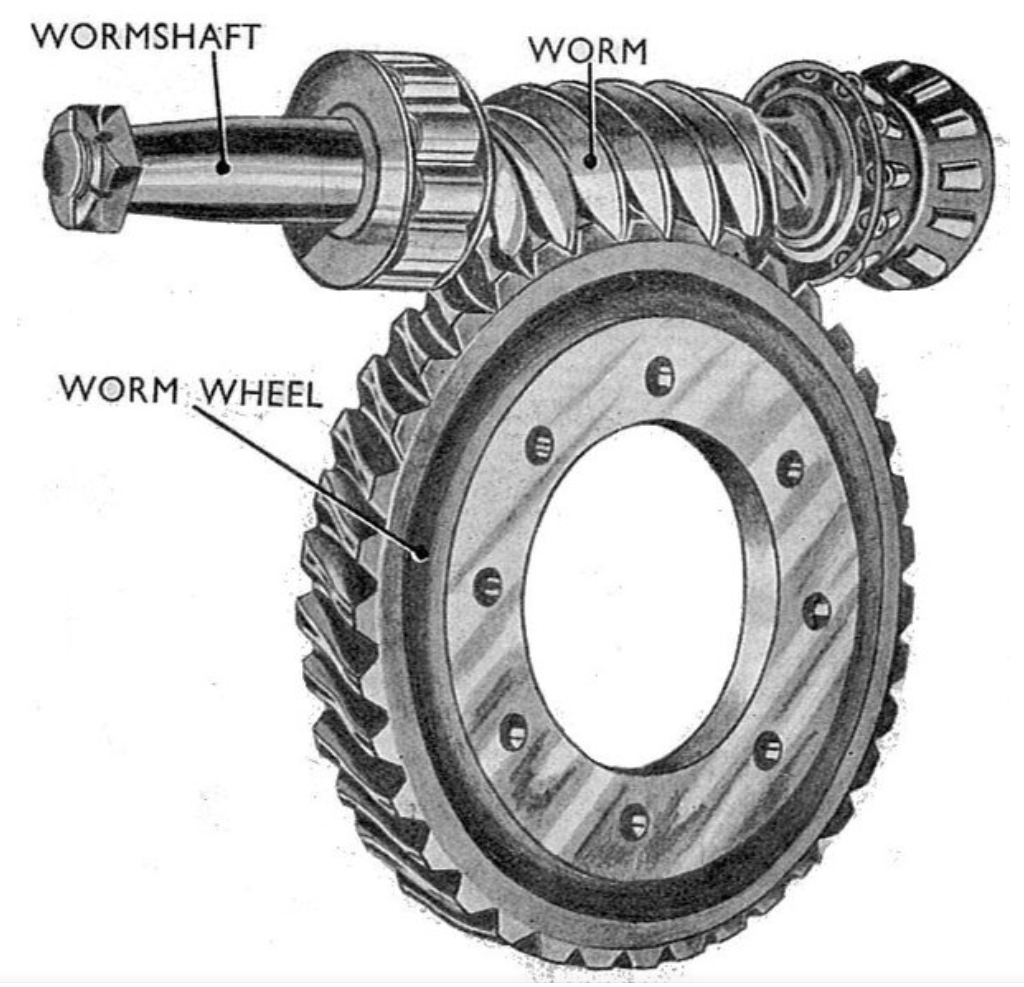
Marine anchoring systems require robust self-locking mechanisms to ensure vessel stability during anchorage. This paper introduces an innovative worm gear self-locking device optimized for ship anchor winches, addressing torque limitations and reliability challenges in conventional designs.
1. Fundamentals of Worm Gear Self-Locking
The self-locking capability of worm gears arises from the friction-dependent relationship between the lead angle (φ) and equivalent friction angle (ρ):
$$ \phi < \rho $$
For marine applications, the critical lead angles vary with material pairings:
| Friction Coefficient (μ) | Maximum Lead Angle |
|---|---|
| 0.6 | 3°29’11” |
| 0.7 | 4°03’57” |
| 0.8 | 4°38’39” |
2. Enhanced Dual-Worm Gear Architecture
The proposed system features dual worm gears with synchronized PLC control, achieving 80:1 speed reduction and 30:1 emergency locking ratios. Key torque parameters are calculated as:
$$ T_2 = T_1 \times \eta \times i_{12} $$
Where:
- $T_1$ = Input torque (55,110 N·mm)
- η = Transmission efficiency (0.65)
- $i_{12}$ = Gear ratio (50)
Material selection critically impacts worm gear performance:
| Component | Material | Treatment | Hardness |
|---|---|---|---|
| Worm | 20Cr Steel | Surface Hardening | 58-63 HRC |
| Worm Gear | ZCuSn5Pb5Zn5 | Sand Casting | HB 90-120 |
3. Dynamic Lubrication Management
The PLC-controlled oil injection system maintains optimal lubrication conditions through:
$$ Q = \frac{\pi d^3 \Delta P}{12\mu L} $$
Where:
- Q = Oil flow rate
- d = Nozzle diameter
- ΔP = Pressure differential
- μ = Dynamic viscosity
- L = Flow path length
4. Motor Power Optimization
Motor selection follows power transmission requirements:
$$ P = \frac{n_1 \times T_1}{9550} $$
For AM3-24 anchor chains (332 kN breaking load), calculations yield:
| Parameter | Value |
|---|---|
| Input Speed (n₁) | 970 rpm |
| Output Torque (T₂) | 1,791,075 N·mm |
| Motor Power | 7.5 kW |
5. Multi-Sensor Feedback System
The integrated monitoring system employs:
- Position sensors: ±0.5° angular resolution
- Torque transducers: 1.2% FS accuracy
- Oil quality monitors: 5 μm particle detection
Signal processing utilizes adaptive filtering algorithms:
$$ SNR_{out} = \frac{P_{signal}}{P_{noise}} \times \frac{T_{int}}{T_{sample}} $$
6. Performance Validation
Rigorous testing demonstrated:
- 98.7% successful locking actions in sea trials
- 0.23 mm average chain slippage
- 1,200+ hour MTBF
This worm gear solution significantly improves marine safety through enhanced self-locking reliability and precise anchor chain management. Future developments will focus on predictive maintenance algorithms and composite material applications for increased corrosion resistance.
